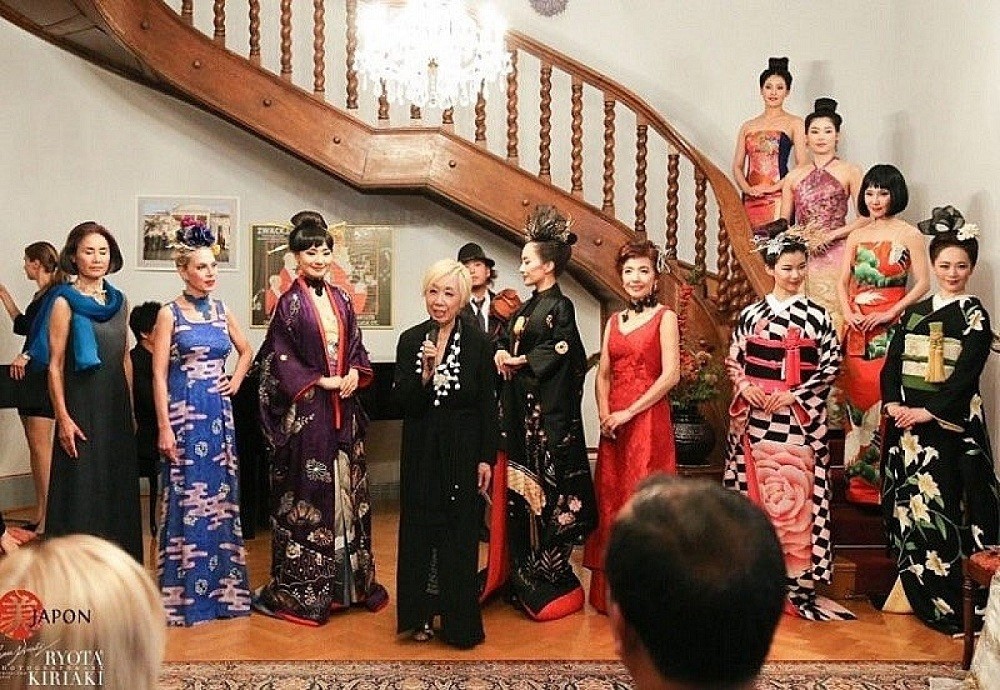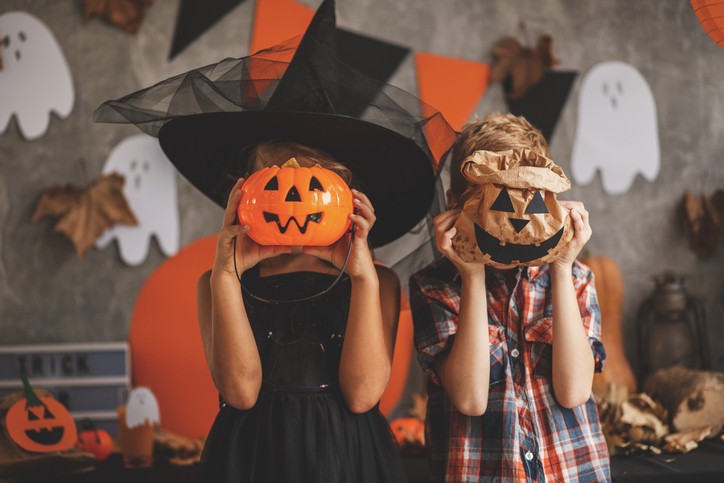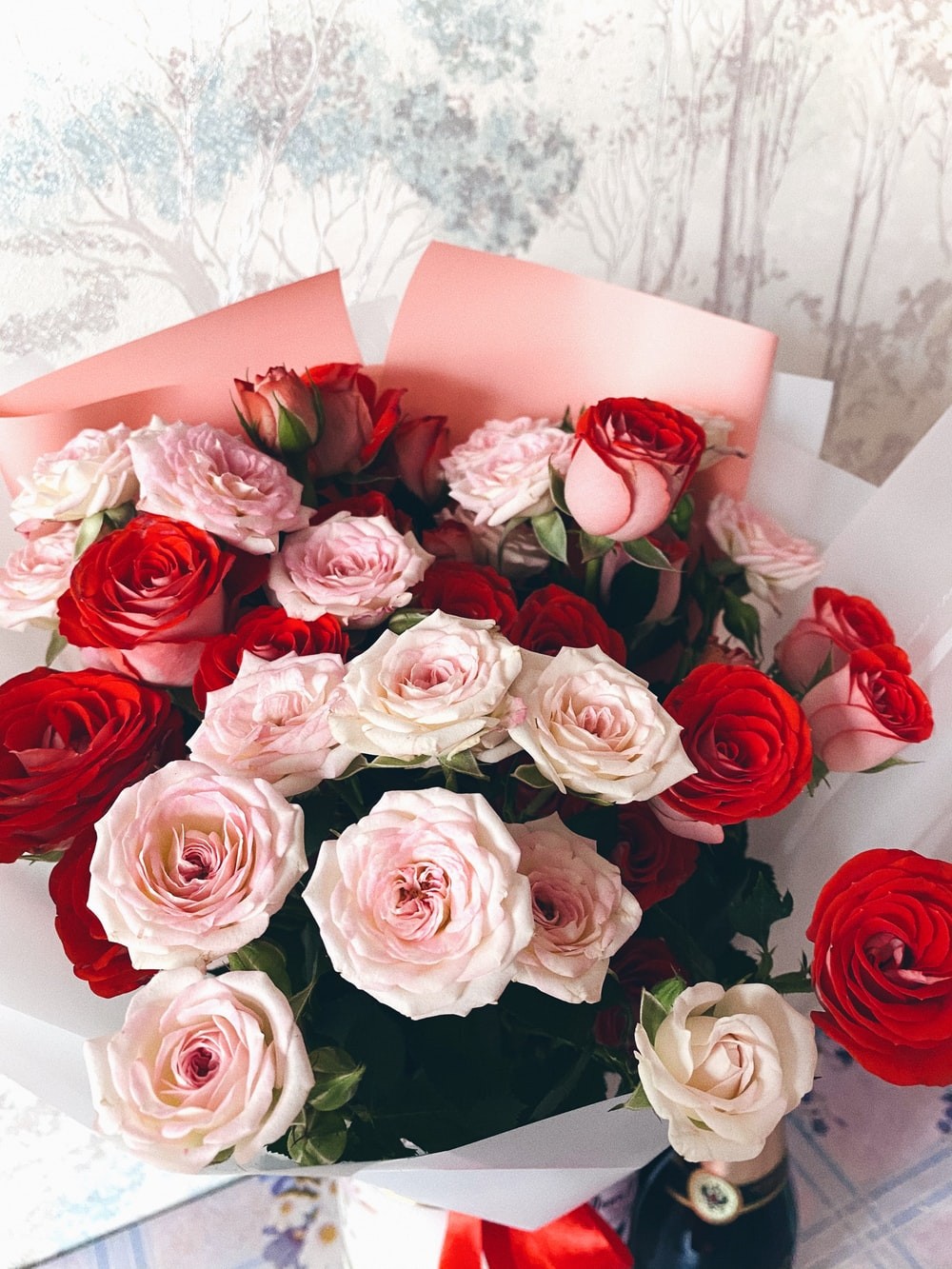Facts About Lunar New Year: Everything You Need To Know About The Holiday
Lunar New Year, also called Spring Festival, is the most important holiday in many Asian countries, including Vietnam and China. The festival is also known as Tet in Vietnam. In North and South Korea it is called Solnal. In Tibet, the natives call it Losar. In 2022, Lunar New Year will begin on February 1.
Tied to the lunar calendar, the holiday began as a time for feasting and to honor household and heavenly deities, as well as ancestors. With the popular adoption of the Western calendar in 1912, the Chinese joined in celebrating January 1 as New Year’s Day. China, however, continues to celebrate Lunar New Year with the traditional greeting, “Kung hei fat choi.”
What is the Lunar New Year?
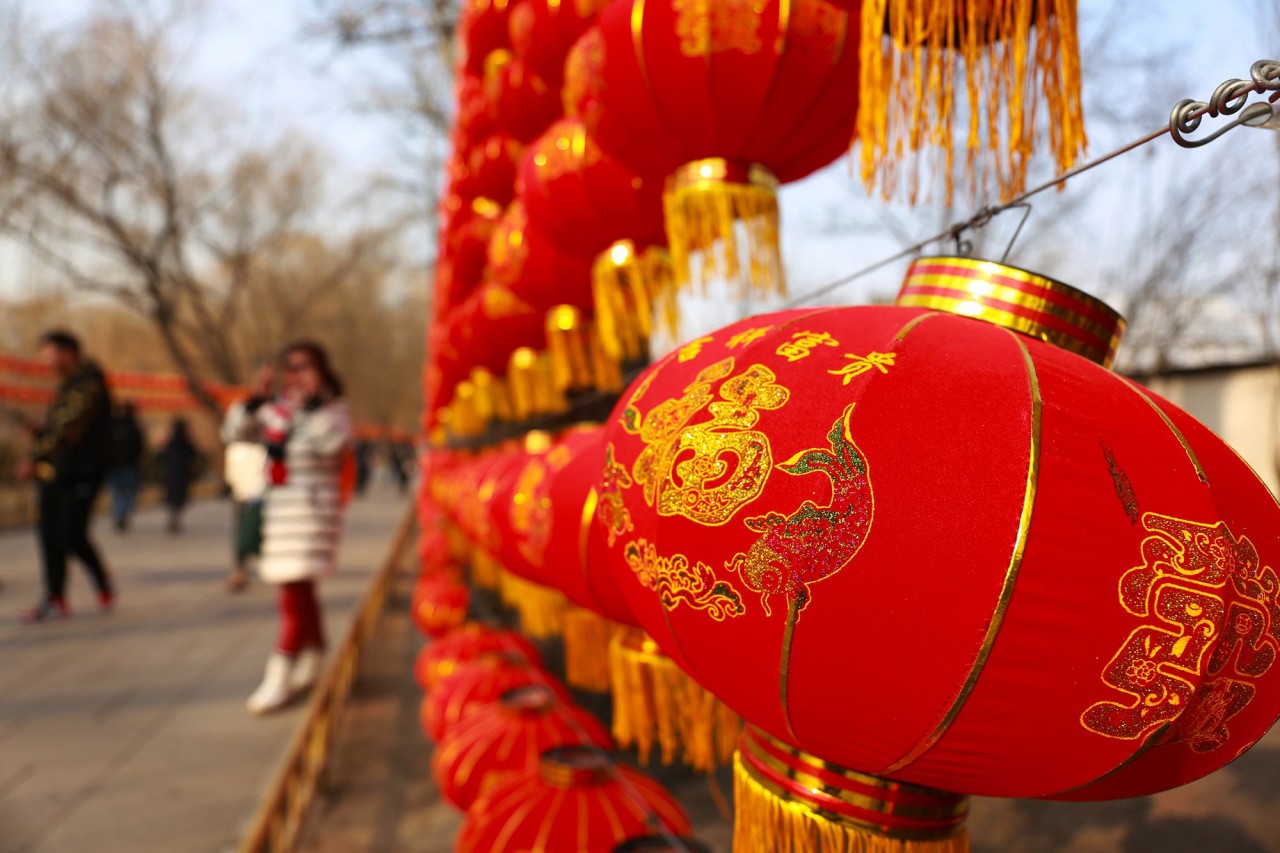 |
| Photo: Slow Food International |
Lunar New Year is the beginning of a calendar year whose months are moon cycles, based on the lunar calendar or lunisolar calendar.
Lunar New Year is particularly celebrated in East Asia, influenced by the Chinese New Year and the Chinese Calendar. It is also a feature of the Hindu-Buddhist calendars of South and Southeast Asia, the Islamic calendar, and the Jewish calendar.
Each year in the Chinese calendar is represented by one of 12 zodiac animals included in the cycle of twelve stations or “signs” along the apparent path of the sun through the cosmos. The 12 zodiac animals are the rat, ox, tiger, rabbit, dragon, snake, horse, sheep, monkey, rooster, dog, and pig.
The year 2022 is slated to be the year of the water tiger. The tiger is known as the king of all beasts in China and the zodiac is associated with strength, exorcising evils and bravery.
Vietnamese New Year 2022 (a Year of the Tiger)
Sharing similarities with Chinese New Year, Vietnamese New Year is important for the Vietnamese people as it is believed that what they do on the first day of the year will affect the rest of the year. Therefore, they pay great attention to every word they say and everything they do on this day.
Here are the dates for the next coming Vietnamese New Year celebrations, as well as the Lunar Zodiac Animals associated with them.
- 2021: February 22 – year of cow
- 2022: February 1 –year of tiger
- 2023: January 22 – year of rabbit
- 2024: February 10 – year of dragon
- 2025: February 29 – year of snake
- 2026: February 17 – year of horse
Preparations for the Lunar New Year
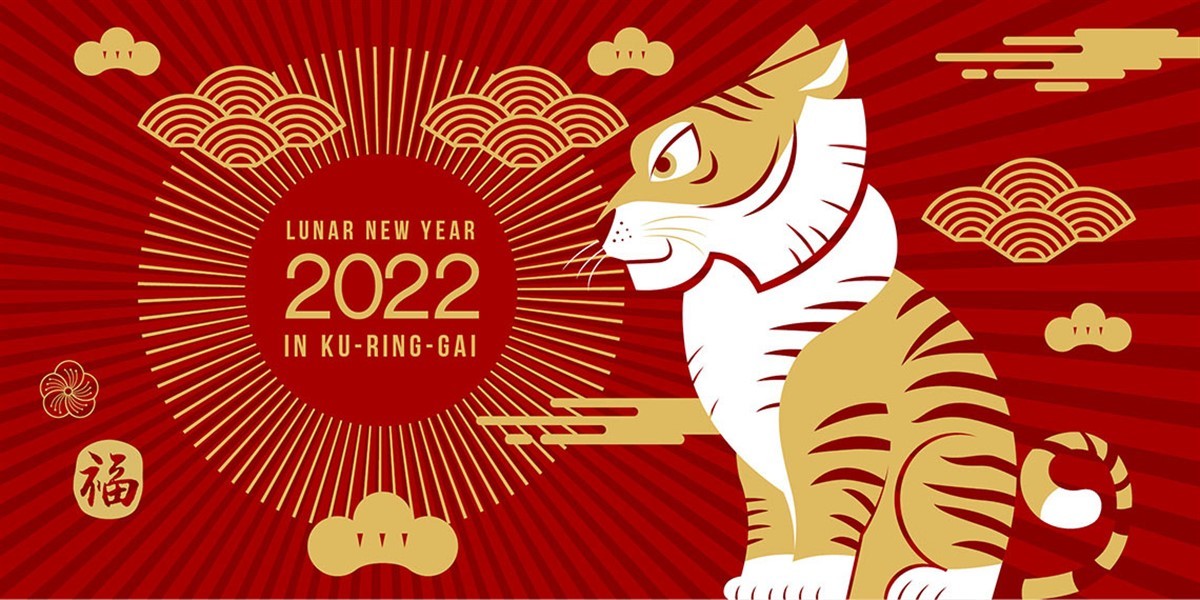 |
| Photo: Ku-ring-gai |
Of all festivals in Vietnam, Tet is the most family-centered holiday, and Vietnamese people often travel back to the places where their families are from to spend the holiday with their extended families. On Tet, families will prepare a feast to welcome visiting relatives and friends, to exchange greetings and best wishes for the New Year.
Before Tet
Before Tet, Vietnamese families will normally spend a lot of time sweeping and cleaning their homes. This action represents the cleansing of bad luck from the previous year and making room for the coming of the New Year.
The Vietnamese believe that the spirits of deceased family members will visit the living ones during Tet, so they venerate the ancestors by cleaning their family shrines, creating a display of pictures of ancestors with burning incense, and presenting offerings of flowers and fruit. Before Tet, the shrines are well cleaned and new offerings and decorations are placed there.
The intense festival atmosphere fills the streets with dazzling displays of colorful flowers. People shop around markets to buy decorations for their homes, ingredients to cook traditional Tet food, and new clothes for wearing when visiting friends at the New Year.
The New Year's Day - Tet
The first day of Tet, however, is typically reserved for the nuclear family. On this day, children will receive red envelopes with money from their older relatives.
New Year's Day is celebrated with people in the streets making loud noises, using firecrackers, drums, bells, and gongs to ward off evil spirits. There is also a parade that takes place on this day. Parades happen all over the cities; lively events full of people wearing masks and performing lion dances.
After the firecrackers and parades, families come together for a large feast of traditional Vietnamese dishes.
Since the Vietnamese believe that the first visitors to a family determine their fortune for the whole year, they like to invite someone of good morality to be the first ones visiting the house to bring them full blessings for the New Year.
Tet is also considered a lucky time of year for opening a shop or starting a business.
Tet Decorations in Vietnam
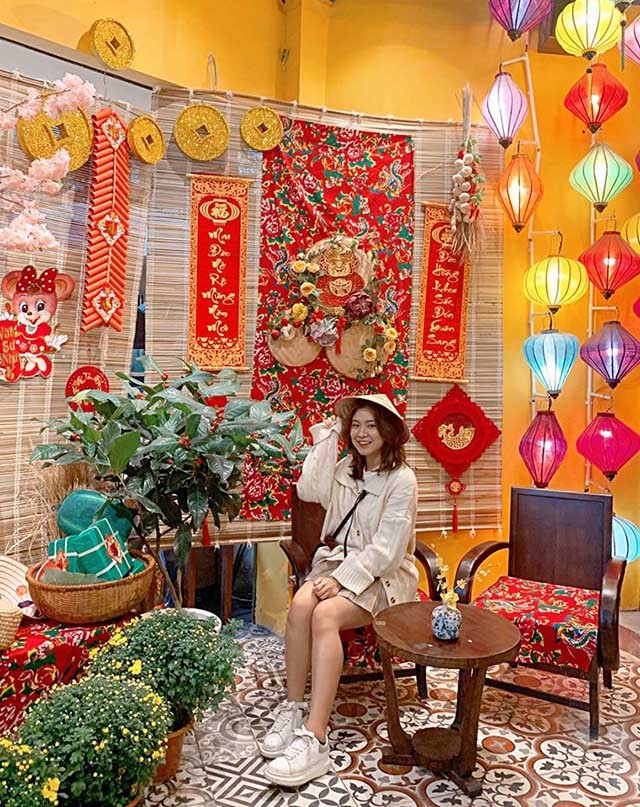 |
| Photo: Saigoncpa |
The decorations in Vietnam for Tet are some of the most impressive, and they really add to the atmosphere.
During the Tet Festival you’ll see people buying peach blossom trees for their homes, kumquat trees, and orange trees. There will be flowers everywhere, including chrysanthemums and orchids mostly, which you’ll see in big displays throughout the cities and people will also have in their homes as well as in pots outside of their homes.
While the peach flowers and kumquat trees are comparatively more popular in the north of Vietnam, the yellow Mai flower is popular in the central and south of the country. These fruits and trees symbolize fertility and fruitfulness that the family hopes for in the coming year ahead!
What to Eat during Tet Festival?
You can take part in the Tet festival by trying traditional Vietnamese food! Tet is a time of indulgence with an array of delicacies served in every family, from pork, chicken, and sticky rice to candied fruit. The following three delicious dishes are the most popular ones eaten by Vietnamese people during Tet as part of their celebration.
Banh Chung
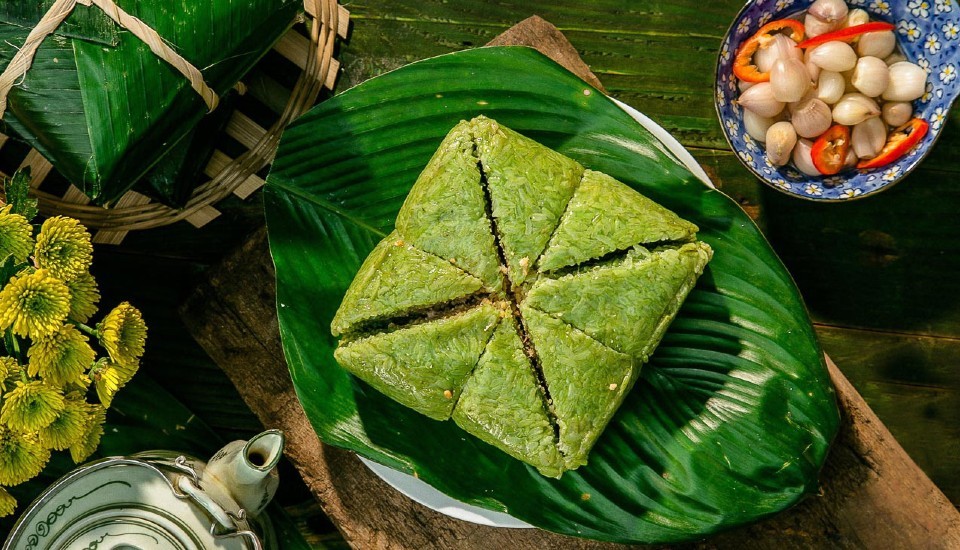 |
| Photo: Lux Travel DMC |
Only eaten in Vietnam during Tet, this tasty treat is made of tightly-packed sticky rice, which may include either a meat filling or a bean spread. This sticky rice is then traditionally wrapped in banana leaves, to keep the inside fresh for the duration of the festival.
Gio or Cha
This is Vietnamese ham or sausage is often served with sticky rice during Tet. You can order this festival food in two different ways; Gio means the meat is boiled and if you ask for cha you will receive meat that has been fried.
Lunar New Year Taboos
1. Wash or cut your hair
Leave your hair as it is on the first day of the New Year.
The Chinese character for hair is the same first character in the word for prosper.
This means washing or cutting it off is seen as washing your fortune away and dramatically reduces chances of prosperity in the year ahead.
Actually, LNY fundamentalists will tell you taking a shower is also off-limits on the first day for the same reason. Dry shampoo and dusting powder will come in handy.
2. Clean post-New Year
Make sure you clean up and throw out your trash BEFORE midnight.
Otherwise you're going to have to wait till the second day of the new lunar year.
Cleaning of any kind on the first day is strictly forbidden.
Don't even wash the dishes.
You cleaned your home to rid it of any bad luck before the New Year -- now you want to be sure not to wipe, sweep or wash away any of the good luck that arrived at the stroke of midnight.
3. Buy books
Avid readers will want to stock up on their books and magazines before the Lunar New Year, because it's bad luck to buy them during the 15-day Spring Festival.
The Chinese word for "book" (shū) sounds exactly the same as the word for "lose" -- so buying a book right after ringing in the New Year is considered an invitation for bad luck.
Also, avoid giving books as gifts to anyone, because it'd be like wishing bad luck upon them.
Vietnamese New Year Traditions
The Five-Fruit Tray
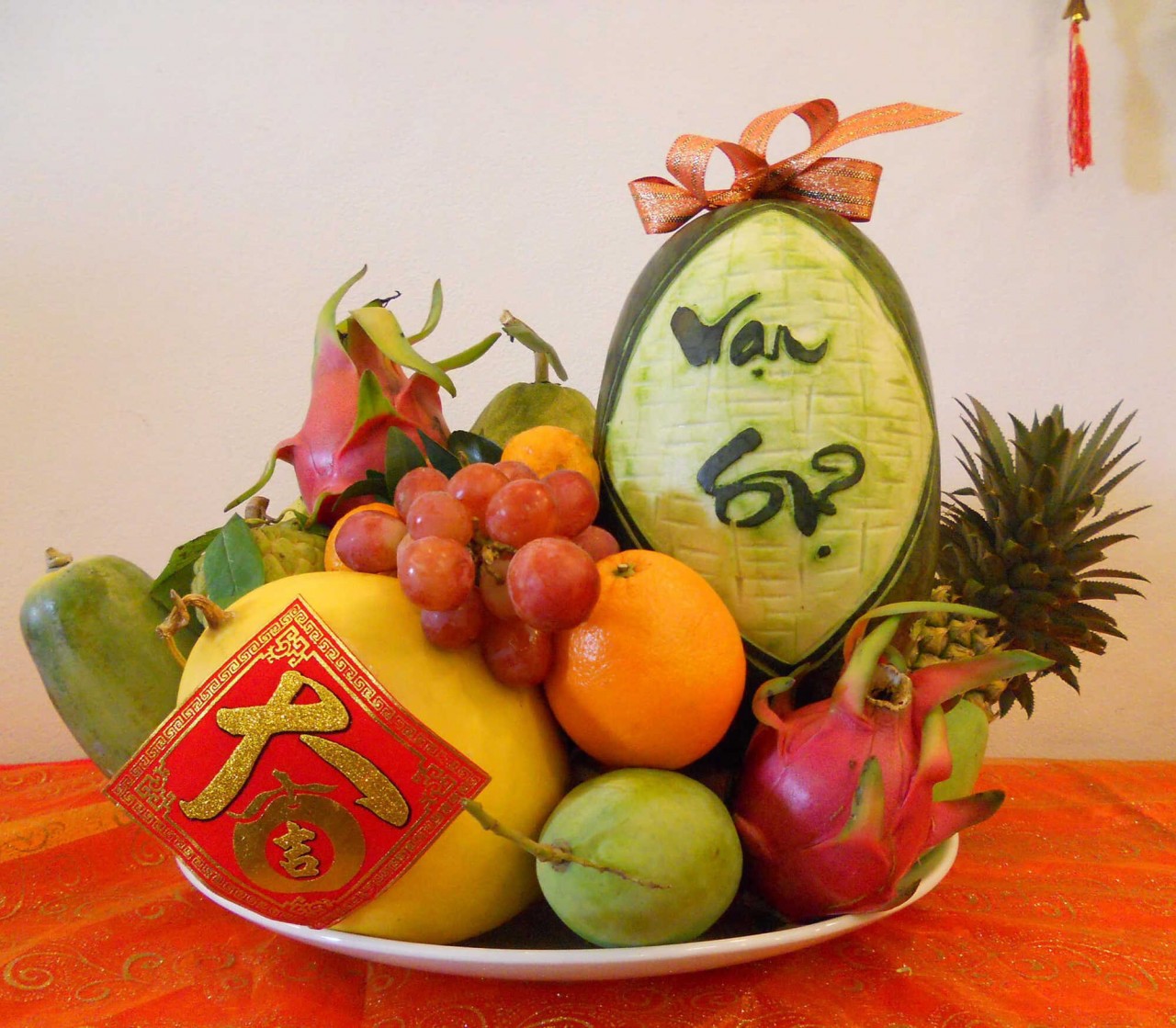 |
| Photo: Bao Gia Lai |
The preparation of the five-fruit tray is an essential Tet tradition in every Vietnamese home. The tray symbolises the family’s respect for their ancestors and their wishes for the New Year. Each fruit represents a different prayer for the future. Due to regional differences in climate and customs, people display the Tet fruit in different ways.
In the North, people believe that the basic elements in oriental philosophy are represented by colours. Metal, wood, water, fire, and earth correlate with white, blue, black, red and yellow respectively. So people carefully choose and organise their fruit according to colour. The northern five-fruit tray often includes, banana, pomelo, peach, mandarin and persimmon.
Due to the weather conditions and red basaltic soil, people in the central areas of Vietnam have a hard time growing many types of produce. These people feel it is more important to show sincere gratitude for their ancestors than to spend too much time making a complicated arrangement. Instead, they use any fruit that they have on hand. Some popular choices for the Central five-fruit tray are dragon fruit, watermelon, pineapple, and orange.
The five-fruit tray in the South is themed around the traditional southern wish for a wealthy New Year. The tray has an abundant display and is generally made up of custard apples, figs, coconuts, papayas, and mangos. Families also like to display red watermelons to bring luck for the year.
Normally, in all regions, the tray will be put on the altar in the home, though sometimes people set it up on the table next to a box of candied fruit.
The Planting of Peach or Apricot trees
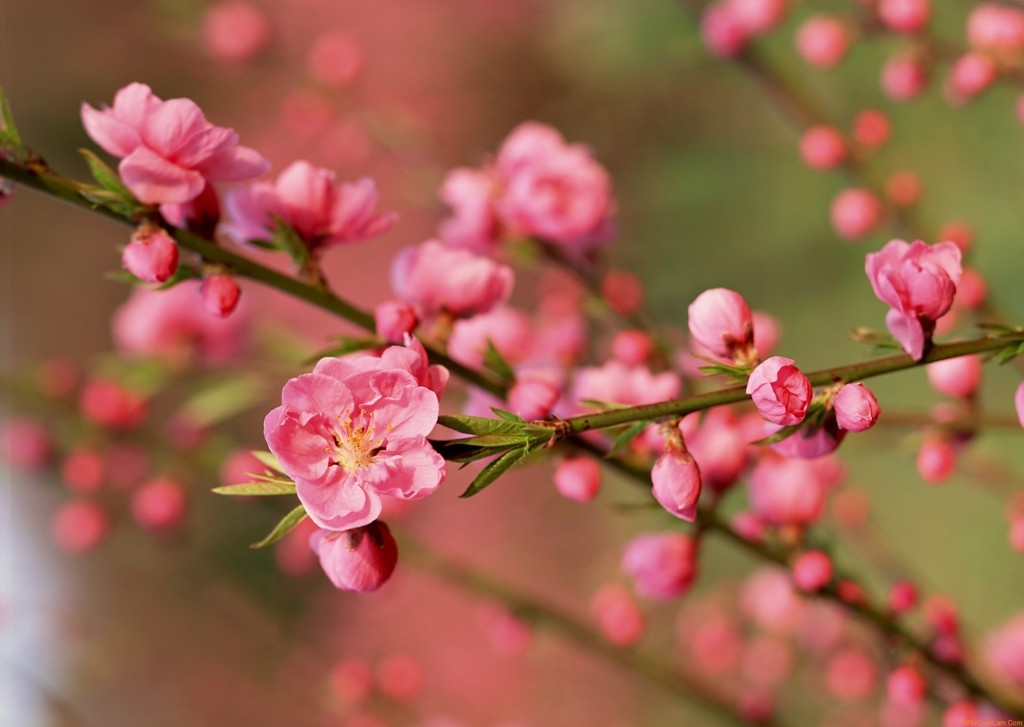 |
| Photo: Vietnammoi |
During Tet people love to look at beautiful flowers because they think certain flowers will bring them happiness and luck in the New Year. People buy peach flowers (in the North) and apricot flowers (in the South) to decorate their homes.
To make these peach and apricot trees even more beautiful, Vietnamese people often hang twinkly LED lights on them, as well as red lucky money envelopes and small plastic figurines representing the gods of wealth.
These plants are placed in the living room or in front of the house. Some companies put them in their offices to enjoy their beauty and to bring hope for good fortune.
Cylindrical Cake – Square Cake
As Tet approaches you’ll notice a fire burning all night long on the stove in most Vietnamese homes. The families are cooking the traditional cakes for Tết. Vietnam is a country where wet rice is farmed, so it makes sense that there are many traditional Vietnamese cakes made from it. Chung cakes and Tet cakes are made from glutinous rice, mung bean and pork and they are essential foods for the Lunar New Year. The colours of the cake symbolise the earth and the sky.
Each region has its own customs, beliefs, and methods, however, both cakes hold equal importance for the families that prepare them.
Mut Tet
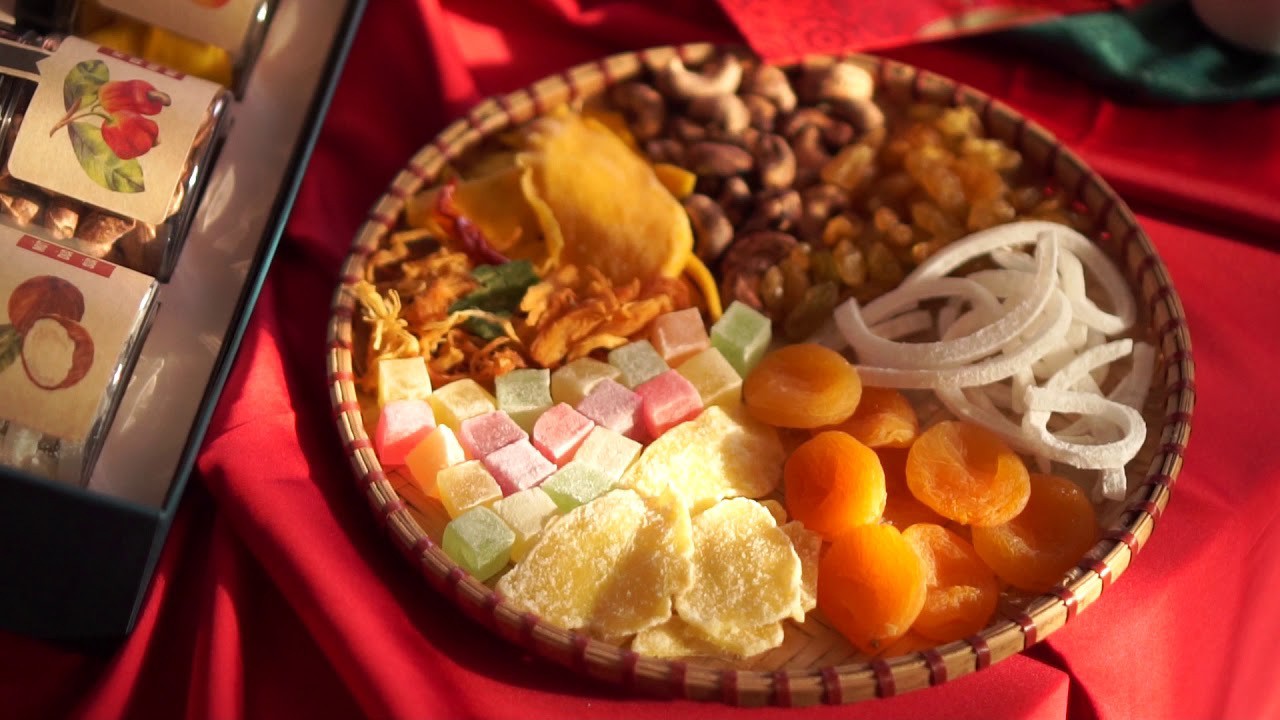 |
| Photo: MoMo |
Mut Tet is colorful, candied fruits that have become an indispensable Tet treat for many generations. A Mut Tet tradition usually consists of a visitor nibbling on the traditional New Year fruit candy, roasted watermelon seeds, and sipping on jasmine tea. The Vietnamese used to make the Tet candies themselves as part of the tradition.
But sadly nowadays, people have become so busy that this sweet tradition is slowly dying. The home-made candies are now being sold commercially in supermarkets and stores and people just conveniently buy them and set them down all ready for Tet. But for those who want to keep the tradition alive, some Vietnamese continue to prepare the New Year treats at home where the ingredients are surprisingly available and healthy. Coconut, ginger, sweet potato, kumquat, tamarind, and pineapple are the usual fruits made into Mut Tet which have the health benefits of relieving flatulence, sore throat and stress; promotes digestion and good sleep; and eases hangovers.
Lunar New Year Celebrations In Different Countries
East Asia
The modern East Asian Lunar New Year celebrations usually fall on the same date across the region (which occurs in late January or early February).
The following lunar new year celebrations are based on the traditional lunisolar calendar of China, but are completely unique to their own cultures. Despite sharing the same traditional Chinese calendar, each celebration may have different and unique interpretations, zodiacs or traditions. While China, Korea and Vietnam still celebrate the lunar new year in addition to the Solar New Year, Japan now only celebrates the solar new year with the remnants of the lunar celebration called Little New Year (小正月, koshōgatsu) occurring on the 15th day of the first lunar month.
China
Before new year celebration was formed, ancient Chinese gathered around and celebrated at the end of harvest in autumn. However, the celebration is not Mid-Autumn Festival, during which Chinese gathered with family and worship the moon. In the Classic of Poetry, a poem written during Western Zhou (1045 BC – 771 BC), by an anonymous farmer, described how people cleaned up millet stack-sites, toasted to guests with mijiu, killed lambs and cooked the meat, went to their master's home, toasted to the master, and cheered for long lives together, in the 10th month of an ancient solar calendars, which was in autumn. The celebration is believed to be one of the prototypes of the Chinese New Year.
The first dated Chinese new year celebration can be traced back to Warring States period (475 BC – 221 AD). In Lüshi Chunqiu, a exorcistic ritual called "Big Nuo (大儺)" was recorded being carried out in the ending day of a year to expel illness in Qin (state). Later, after Qin unified China and the Qin dynasty was founded, the ritual was continued. It evolved to cleaning up houses thoroughly in the preceding days of Chinese New Year.
The first mentioning of celebration of the start of a new year was recorded in Han dynasty (202 BC – 220 AD). In the book Simin Yueling (四民月令), written by Eastern Han's agronomist and writer Cui Shi (崔寔), celebration was recorded by stating "The starting day of the first month, is called ‘Zheng Ri’. I bring my wife and children, to worship ancestors and commemorate my father." Later he wrote: "Children, wife, grandchildren, and great grandchildren all serve pepper wine to their parents, make their toast, and wish their parents good health. It's a thriving view." People also went to acquaintances' homes and wished each others happy new year. In Book of the Later Han Volume 27, 吴良, a county officer was recorded going to his prefect's house with a government secretary, toasting to the prefect and praising the prefect's merit.
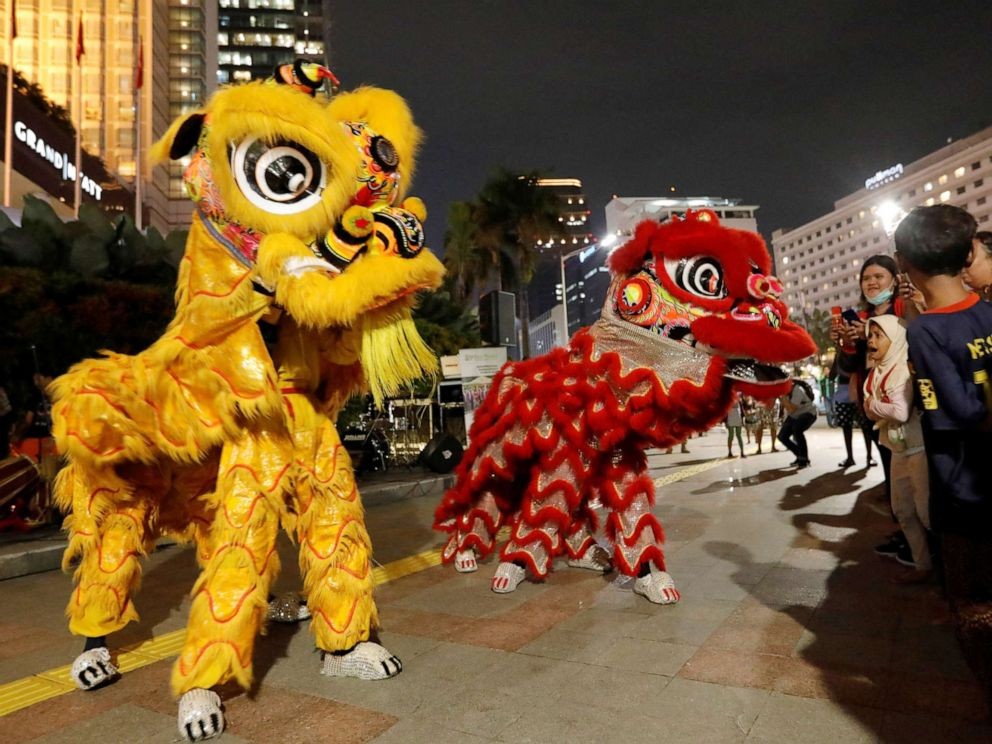 |
| Photo: ABC News |
Korea
The earliest references to Korean New Year are found in 7th century in Chinese historical works, the Book of Sui and the Old Book of Tang, containing excerpts of celebrations during the New Year in the Silla Kingdom, back when the kingdom's calendar was influenced by Tang dynasty's calendaric system. Korea's own record of new year celebration is found in Samguk yusa (Memorabilia of the Three Kingdoms), compiled in the 13th century. Under the rule of 21st King of Silla, new year was celebrated in 488 AD. Then celebration of Korean New Year have continued to Goryeo and Joseon. By the 13th century, Korean New Year was one of the nine major Korean festivals that included ancestral rites, according to the Korean historical work, the Goryeosa.
 | Vietnam Increases Frequency of International Flights for Lunar New Year As Tet (Lunar New Year) approaches, the frequency of regular flights between Vietnam and a number of destinations will be boosted beginning Sunday to meet ... |
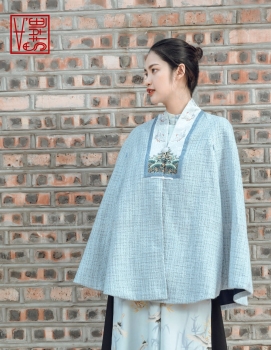 | Vietnamese Don Ancient Costumes to Welcome Lunar New Year Vietnamese girls and women always put on ao dai to enjoy the festive Lunar New Year and take the most vibrant and memorable photos. |
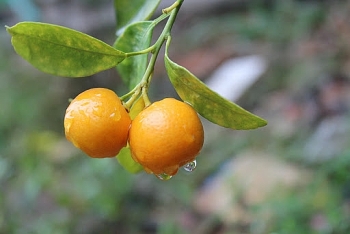 | Everything You Need to Know About Vietnam's Festive Kumquat Fruit During the days just before the Lunar New Year, it is easy to see motorbikes carrying all sorts of ornamental plants on the streets |
Recommended
 Handbook
Handbook
Vietnam Moves Up 8 Places In World Happiness Index
 Handbook
Handbook
Travelling Vietnam Through French Artist's Children Book
 Multimedia
Multimedia
Vietnamese Turmeric Fish among Best Asian Dishes: TasteAtlas
 Handbook
Handbook
From Lost to Found: German Tourist Thanks Vietnamese Police for Returning His Bag
Popular article
 Handbook
Handbook
Prediction and Resolution for the Disasters of Humanity
 Handbook
Handbook
16 French Films To Be Shown For Free During Tet Holiday In Vietnam
 Handbook
Handbook
Unique Cultural and Religious Activities to Welcome Year of the Snake
 Handbook
Handbook




